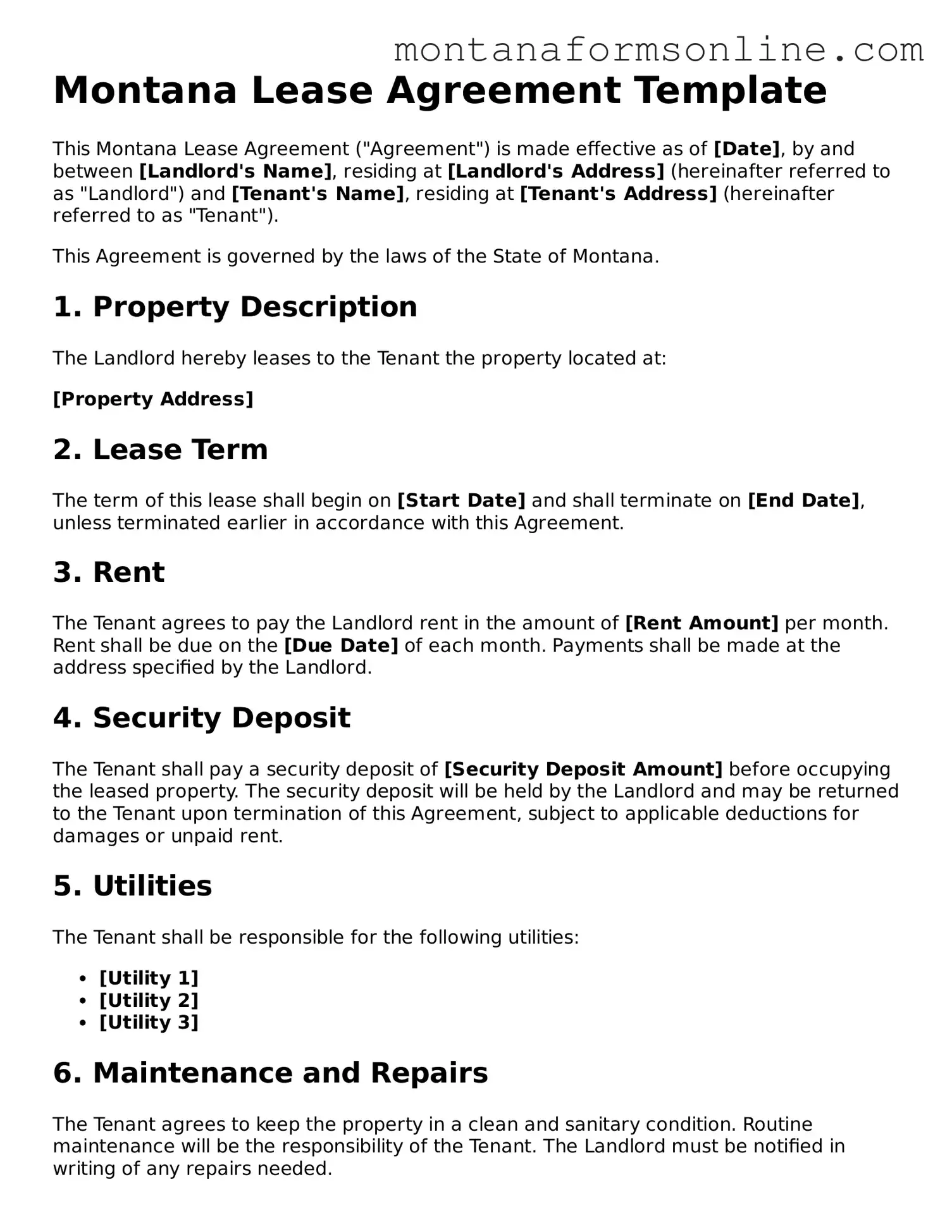Montana Lease Agreement Template
This Montana Lease Agreement ("Agreement") is made effective as of [Date], by and between [Landlord's Name], residing at [Landlord's Address] (hereinafter referred to as "Landlord") and [Tenant's Name], residing at [Tenant's Address] (hereinafter referred to as "Tenant").
This Agreement is governed by the laws of the State of Montana.
1. Property Description
The Landlord hereby leases to the Tenant the property located at:
[Property Address]
2. Lease Term
The term of this lease shall begin on [Start Date] and shall terminate on [End Date], unless terminated earlier in accordance with this Agreement.
3. Rent
The Tenant agrees to pay the Landlord rent in the amount of [Rent Amount] per month. Rent shall be due on the [Due Date] of each month. Payments shall be made at the address specified by the Landlord.
4. Security Deposit
The Tenant shall pay a security deposit of [Security Deposit Amount] before occupying the leased property. The security deposit will be held by the Landlord and may be returned to the Tenant upon termination of this Agreement, subject to applicable deductions for damages or unpaid rent.
5. Utilities
The Tenant shall be responsible for the following utilities:
- [Utility 1]
- [Utility 2]
- [Utility 3]
6. Maintenance and Repairs
The Tenant agrees to keep the property in a clean and sanitary condition.
Routine maintenance will be the responsibility of the Tenant. The Landlord must be notified in writing of any repairs needed.
7. Use of Property
The Tenant shall use the property for residential purposes only and shall not engage in any unlawful activities on the premises.
8. Termination
This Agreement may be terminated by either party providing written notice of [Notice Period] days to the other party prior to the intended termination date.
9. Governing Law
This Agreement shall be governed by and construed in accordance with the laws of the State of Montana.
10. Signatures
By signing below, both parties agree to the terms of this Agreement.
Landlord Signature: ___________________________ Date: ______________
Tenant Signature: ___________________________ Date: ______________
